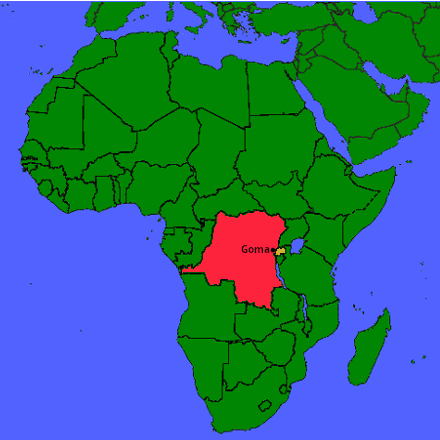
Circle the area on this map

A. Belgium’s King Leopold II ruled the country as his private property from 1885 to 1908. He amassed a huge fortune from extracting natural resources, especially rubber for the world’s growing auto industry. It is estimated that half of Congo’s people died from violence and disease before the Belgian government took over the area as a regular colony.
D. The U.S. Department of Commerce estimates Congo mineral deposits to be worth $24 trillion, many of them crucial to global technology. Natural resources include cobalt, copper, niobium, tantalum, petroleum, diamonds, gold, silver, zinc, manganese, tin, uranium, coal, hydropower, and timber.
C. Rwandan troops entered eastern Congo in 1996 to battle fighters who fled across the border after the Rwandan Civil War and genocide. After that ethnic fighting, Rwanda backed various Congolese rebels including the group that captured Goma, which said it intends to take over all of the country.
A. Burundi has a gross domestic product (GDP) per person of only $800 a year. Central African Republic is second-poorest at $1,100, and that figure is $1,500 in Congo. By comparison, GDP per person is $74,600 a year in the United States and $132,800 in Luxembourg.